How to Make a Kokedama Easily: Master the Art of Japanese Moss Balls
- June 17, 2024
- 0 comment
Explore how to make a Kokedama easily with our step-by-step guide. Master the art of crafting these elegant Japanese moss balls today. Dive into the graceful art of Kokedama, where nature meets creativity in the palm of your hands. This guide will show you how to make a Kokedama easily, turning an ordinary houseplant into an extraordinary moss ball that symbolizes balance and beauty.
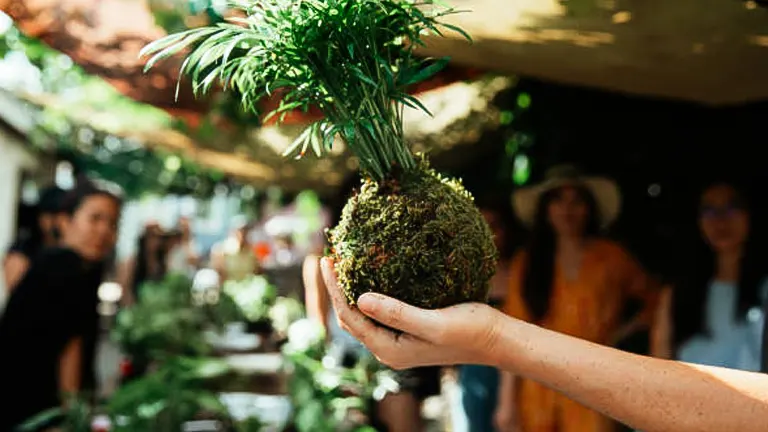
Whether you’re looking to decorate your home or searching for a calming hobby, our straightforward steps will help you create a living masterpiece. Let’s start crafting your very own moss ball and bring a piece of Japanese tradition into your living space!
Table of Contents
- Introduction to Kokedama
- Understanding Kokedama
- Materials Needed
- Choosing the Right Plant
- Preparing the Soil Mixture
- Creating the Moss Ball
- Assembly of the Kokedama
- Care and Maintenance
- Troubleshooting Common Issues
- Conclusion
- FAQs
Introduction to Kokedama
Kokedama, a traditional Japanese art form, is derived from the ancient principles of bonsai. The term itself means “moss ball,” which aptly describes the appearance of these unique botanical creations. This practice involves taking the root system of a plant and encasing it in a special soil mixture, then covering it in moss and securing it with twine. The result is a beautiful, self-contained orb that can be hung or placed in a dish, creating a visually stunning display of greenery that seems to float in the air.
Understanding Kokedama

Kokedama, which literally translates to “moss ball,” is a Japanese gardening practice that embodies the principles of simplicity and balance. This art form is deeply rooted in the philosophy of “wabi-sabi,” which celebrates the beauty of imperfection and the natural cycle of growth and decay. By encasing the roots of a plant in a spherical ball of soil and moss, Kokedama elevates the aesthetic of minimalism while connecting us more intimately with the natural world.
Scientific Perspective on Moss and Plant Health
Moss, the primary component of Kokedama, is not just a decorative element; it plays a critical role in the health and stability of the plant. Sphagnum moss, commonly used in these arrangements, has a high cation exchange capacity (CEC) of 100-200 meq/100 g. This means it can store nutrients and water much more efficiently than typical soil, releasing them slowly to the plant roots. This property not only supports the plant’s growth in a limited substrate volume but also reduces the frequency of watering needed.
Benefits of Kokedama
Creating a Kokedama involves skill and creativity, as each piece is uniquely handcrafted. This adaptability makes Kokedama not only a visually appealing art form but also a practical approach to urban gardening. In environments where space is a premium, Kokedama offers a viable solution for greenery without the need for expansive garden areas. They are particularly suited for air-purifying plants, which can enhance indoor air quality by removing volatile organic compounds (VOCs). For instance, studies have shown that certain ferns, commonly used in Kokedama, can remove up to 20% of formaldehyde in indoor environments.
Comparative Analysis of Common Kokedama Plants
| Plant Type | Light Requirements | Water Needs | Air Purifying Capacity | Notes |
|---|---|---|---|---|
| Ferns | Indirect, low light | High | Moderate | Ideal for high-humidity environments |
| Ivy | Moderate to bright | Moderate | High | Effective at removing benzene |
| Orchids | Bright, indirect | Moderate | Low | High aesthetic appeal, delicate |
| Spider Plant | Bright, indirect | Moderate | Very High | Excellent at removing formaldehyde |
Enhanced Aesthetic and Practical Value
The minimalist design of Kokedama not only highlights the plant’s natural beauty but also serves a functional purpose. The compact and self-contained nature of these moss balls allows for versatility in placement and ease of care, making them ideal for modern living spaces that value both form and function.
Materials Needed
To begin creating your own Kokedama, you’ll need to gather the following materials:
- Sphagnum Moss: This type of moss is ideal for Kokedama because of its stringy texture and ability to retain water, creating a supportive and hydrating environment for the plant’s roots.
- Bonsai Soil: Essential for its structure and drainage capabilities, bonsai soil ensures your plant remains healthy and well-drained in its mossy cocoon.
- Plants Suitable for Kokedama: Shade-loving plants with flexible root systems are perfect. Consider ferns, ivy, or orchids for their adaptability and visual appeal.
- String: Natural fibers like cotton or jute or even synthetic fishing line can be used to bind the soil and moss around the roots securely.
- Tools: Basic gardening tools such as scissors for cutting string and gloves for handling materials can help streamline the process.
Table of Materials
| Material | Property | Importance |
|---|---|---|
| Sphagnum Moss | High water retention, antifungal | Keeps roots moist and healthy, prevents fungal growth. |
| Bonsai Soil | Porous, well-draining | Ensures proper root aeration and moisture management. |
| Suitable Plants | High transpiration rates | Supports internal humidity, aids in air purification within Kokedama. |
| String | Durable, flexible | Secures the structure without damaging the moss or roots. |
| Gardening Tools | Precision, ease of use | Facilitates the careful assembly and maintenance of Kokedama. |
With these materials at hand, you’re well-prepared to embark on the rewarding task of creating a Kokedama. This setup ensures you have a strong foundation for the detailed steps to come, focusing next on selecting the right plant and preparing the soil mixture.
Choosing the Right Plant
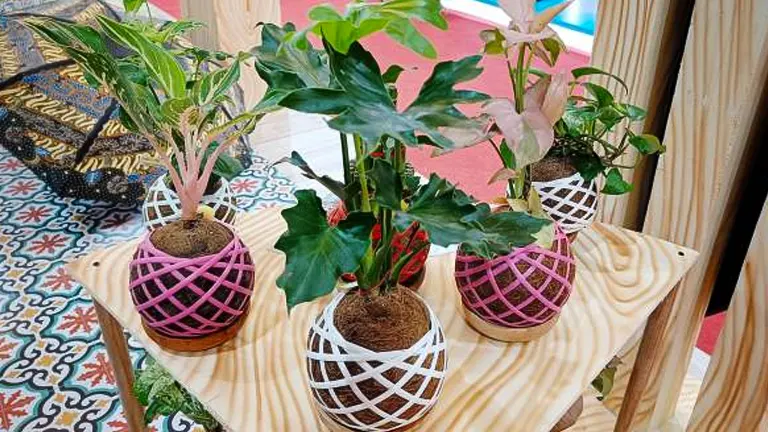
The choice of plant is pivotal in determining the success and visual impact of your Kokedama. This style of planting not only demands plants that can thrive in unique conditions but also those that contribute to the aesthetic and ecological balance of the arrangement.
Criteria for Plant Selection
- Light Requirements: Plants for Kokedama should be adapted to low or indirect sunlight. This mimics their natural under-canopy habitats where light is filtered through higher foliage. Photosynthetic efficiency under these conditions is crucial; therefore, plants with broad, dark green leaves, like ferns, are ideal as they can absorb light more effectively at lower intensities.
- Water Needs: Consistent moisture is key, but waterlogging can be detrimental. Plants chosen should have a natural propensity to manage fluctuating water levels. Moss acts as a natural buffer by retaining and slowly releasing moisture, creating a humid microenvironment that benefits hydration-loving plants.
- Root Structure: Flexible and compact root systems are necessary due to the constrained space within a moss ball. These roots should be robust enough to anchor the plant but flexible enough to adapt to the spherical shape without damage.
Recommended Plants and Their Characteristics
Here’s a detailed look at some plants that are particularly well-suited for Kokedama, along with their specific tolerances and benefits:
- Ferns: Excelling in shaded conditions, ferns are equipped with a dense root mat that thrives in the moist, well-aerated setup of a Kokedama. Their ability to adapt to low light and high humidity makes them ideal.
- Ivy: This plant’s vigorous growth and trailing vines create a dramatic cascading effect from the moss ball. Ivy’s adaptability to various light conditions and its dense root system make it a sturdy choice.
- Orchids: With their striking flowers and aerial roots, orchids are aesthetically pleasing and efficient in absorbing moisture and nutrients. They prefer the high humidity and stable conditions provided by the moss ball.
Comparative Table of Plant Characteristics
| Plant | Light Tolerance | Water Requirements | Root Flexibility | Aesthetic Contribution |
|---|---|---|---|---|
| Ferns | Low to moderate | High moisture | High flexibility | Lush, green foliage |
| Ivy | Low to bright | Moderate moisture | Moderate flexibility | Cascading vines |
| Orchids | Moderate to bright | Moderate moisture | High flexibility | Exotic flowers |
Preparing the Soil Mixture
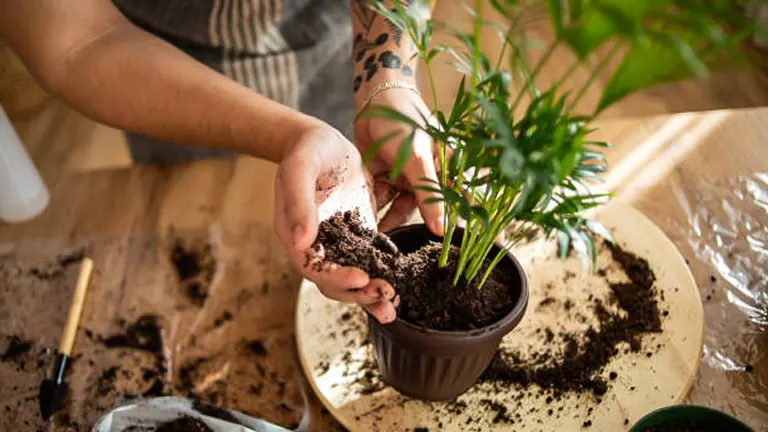
The soil mixture plays a pivotal role in the health and sustainability of your Kokedama. It must provide structural integrity, support plant growth, and manage moisture effectively. This section delves into the scientific basis behind the choice of ingredients and their proportions, ensuring your Kokedama has the optimal environment to thrive.
Soil Composition
- Bonsai Soil: This component is essential for its drainage properties and structural stability. Bonsai soil is often a mix of akadama, pumice, and fine lava rock, which helps to prevent compaction, allowing roots to breathe and grow without becoming waterlogged. Its pH typically ranges from slightly acidic to neutral, accommodating a wide range of plant preferences.
- Peat Moss: Known for its ability to retain water and nutrients, peat moss is an organic component that helps keep the root environment moist. It has a high cation exchange capacity (CEC), which enhances its ability to store nutrients in a form that plants can easily access. This is particularly crucial in the enclosed setup of a Kokedama, where nutrient leaching can be a concern.
Mixing Procedure
- Proportions: A recommended mix ratio is two parts bonsai soil to one part peat moss. This balance ensures adequate drainage while maintaining sufficient moisture retention.
- Blending: Thoroughly mix the components to create a uniform blend. Uniformity is crucial to prevent any root zones from either drying out or becoming too wet, which could stress the plant.
- Consistency Check: The final mixture should be pliable and cohesive. It should hold together in a ball when compressed but not release water droplets, indicating a balanced moisture level.
Testing Soil Mixture
- Compaction Test: Gently squeeze a ball of the soil mix. It should not crumble (too dry) or ooze water (too wet). Adjust with more bonsai soil for drainage or more peat moss for moisture as needed.
- pH Test: Ideally, check the pH of your soil mix. Most plants used in Kokedama prefer a pH between 5.5 and 6.5. Adjusting pH can be done by adding calcined clay or sulfur, depending on whether you need to increase or decrease acidity.
Comparative Table of Material Properties
| Material | Water Retention | Drainage Capability | Cation Exchange Capacity | pH Range |
|---|---|---|---|---|
| Bonsai Soil | Low | High | Moderate | 5.5 – 7.0 |
| Peat Moss | High | Moderate | High | 3.5 – 4.5 |
Creating the Moss Ball
1. Soak the Moss
- Begin by gathering your sphagnum moss. This type of moss is preferred for its long fibers and excellent water retention.
- Submerge the moss in a bowl of water. Allow it to soak thoroughly until it is fully saturated, which typically takes about 10 minutes.
- Gently wring out the moss to remove excess water. The goal is to have it moist enough to be pliable but not so wet that it drips. This moisture level is crucial as it will be easier to work with and will help in forming a solid structure.
2. Prepare the Plant
- Carefully remove your chosen plant from its current container. Be gentle to minimize stress on the plant.
- Shake off any loose soil from the roots and rinse them lightly if necessary to clear away old soil, which can inhibit new growth.
- Inspect the roots for any that are dead or overly long; trim these with scissors. This pruning helps stimulate growth and ensures a healthier plant.
3. Form the Soil Ball
- Use a pre-mixed soil suitable for Kokedama, which usually contains peat and akadama soil. This mixture helps maintain moisture and provides the necessary nutrients.
- Encase the plant’s roots in the soil mixture, gradually adding soil and compressing it until it forms a compact ball. The size of the ball should be proportionate to the size of the plant, ensuring it can support the plant’s weight and growth needs.
4. Apply the Moss
- Take the pre-soaked sphagnum moss and wrap it around the soil ball. Ensure complete coverage by patching any holes with additional moss. The moss should fit snugly, enveloping the soil completely.
- Arrange the moss for a visually pleasing look, smoothing out any lumps and ensuring the coverage is even. This step not only secures the soil inside but also adds to the overall beauty of the Kokedama.
5. Secure with String
- Select a natural fiber string, such as jute or cotton, which will blend aesthetically with the moss and support the structure without damaging it.
- Start at the bottom of the moss ball, winding the string around it in a crisscross pattern. This technique helps maintain the integrity of the moss and soil ball, securing them tightly.
- Tie off the string at the top of the moss ball once you are satisfied with the stability and appearance. Tuck any loose ends of the string into the moss to keep a neat appearance.
Assembly of the Kokedama
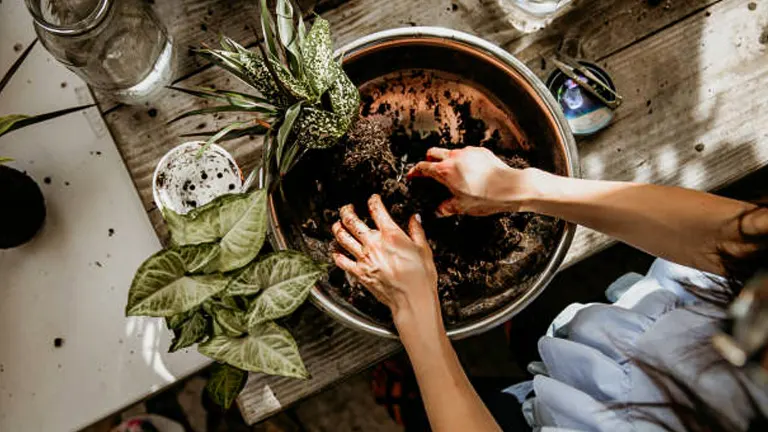
Once the moss ball is ready, assembling the Kokedama becomes an opportunity to blend botanical science with artistic expression. This stage not only involves securing the plant but also creatively showcasing your living artwork:
Finishing Touches
- Moss and String Adjustment: After wrapping the moss ball with string, carefully trim any overhanging moss to maintain a spherical, neat appearance. It’s important that the string is tight enough to secure the moss without compromising the health of the roots by cutting into them.
- Root Health Check: Use a magnifying glass to inspect the tightness of the string around the roots. Ensure there is enough room for slight natural expansion. This is crucial for the plant’s growth and root aeration.
Choosing a Display Method
- Environmental Considerations: Different plants have varying light and humidity requirements. For instance, ferns thrive in high humidity and low light, while succulents prefer bright, indirect light.
- Display Options:
- Hanging: Ideal for plants that benefit from air circulation, such as orchids. Ensure the string is durable and check the weight tolerance.
- Stationary: Using a shallow dish or a tray filled with water pebbles can increase ambient humidity, beneficial for tropical plants.
Adding Decorative Elements
- Enhancement with Accents: Integrate decorative elements like polished stones, ceramic figures, or wood pieces to enhance the visual appeal. Each element should complement the plant’s natural aesthetics and not overshadow it.
- Scientific Touch: Place a hygrometer near the Kokedama to monitor humidity levels, adjusting your care routine based on the plant’s specific needs.
Innovative Display Ideas
- Rotational Display: Create a rotating base to allow even light distribution, especially beneficial for hanging Kokedamas.
- LED Accent Lighting: Use subtle LED lights to highlight the Kokedama in low-light conditions, choosing colors that enhance the plant’s natural hues.
Kokedama Display Methods and Benefits
| Display Method | Light Requirement | Humidity Requirement | Benefits | Recommended Plant Types |
|---|---|---|---|---|
| Hanging | Bright, indirect | Moderate to high | Enhances air circulation, decorative | Orchids, Ferns, Air Plants |
| Stationary | Low to moderate | High | Increases humidity, easy to maintain | Ferns, Mosses, Tropical Plants |
| Rotational | Varies | Varies | Even light exposure, unique display | Succulents, Small Foliage |
| LED Lit | Low | Moderate | Highlight features, extends viewing | Decorative Mosses, Small Ferns |
Care and Maintenance
Maintaining a Kokedama involves a blend of art and science, ensuring that these living sculptures stay healthy and visually appealing. Follow these scientifically-backed care guidelines:
Watering
- Method: Submerge the moss ball in water until it stops emitting bubbles, which indicates full saturation.
- Frequency: The frequency depends on several variables, including the type of plant, size of the moss ball, and ambient humidity. Typically, watering once a week is sufficient, but this may increase to twice a week in hot, dry conditions or decrease in cooler, humid conditions.
- Temperature: Use room temperature water to avoid shocking the plant’s roots, which can cause stress.
Light Requirements
- Light Intensity: Provide 10,000 to 20,000 lux for shade-loving plants and 20,000 to 50,000 lux for plants preferring bright, indirect light. Use a lux meter to measure light levels in the desired location.
- Duration: Most Kokedama plants require 12-16 hours of light per day, which can be supplemented with grow lights during shorter winter days.
Humidity
- Optimal Levels: Aim for 60-80% humidity for most tropical plants. Use a digital hygrometer to monitor the environment.
- Adjustments: In dry environments, increase humidity by placing a humidity tray near the Kokedama or using a room humidifier.
Feeding
- Nutrient Solution: Apply a quarter-strength balanced liquid fertilizer (e.g., 10-10-10 NPK) every 4-6 weeks during the growing season.
- Application Method: Water the Kokedama first to ensure the moss is moist, then apply the diluted fertilizer to avoid root burn.
Special Care Tips
- Trimming: Periodically trim any dead or overgrown moss to maintain the aesthetics and health of the moss ball.
- Inspection: Regularly inspect for signs of pests or disease. Early detection and treatment can prevent more serious issues.
Care Parameters by Plant Type
| Plant Type | Watering Frequency | Light Requirement (Lux) | Humidity Requirement (%) | Fertilizer (NPK Ratio) |
|---|---|---|---|---|
| Ferns | Twice a week | 10,000 – 20,000 | 70 – 80 | 10-10-10 (Quarter strength) |
| Orchids | Once a week | 15,000 – 30,000 | 50 – 70 | 20-20-20 (Quarter strength) |
| Tropical Foliage | Every 5 days | 20,000 – 50,000 | 60 – 80 | 20-10-20 (Quarter strength) |
| Succulents | Every 10 days | 30,000 – 50,000 | 40 – 50 | 10-10-10 (Half strength) |
| Small Leafy Plants | Twice a week | 10,000 – 20,000 | 60 – 75 | 10-10-10 (Quarter strength) |
Troubleshooting Common Issues
Even with careful maintenance, you may encounter some issues. Here are common problems and how to solve them:
- If the moss turns brown, it might be too dry. Increase the frequency of watering and consider misting the moss between waterings.
- Overwatering can lead to root rot. If the moss ball remains too wet, allow it to dry out more between waterings and ensure it drains completely after soaking.
- A wilting plant can be a sign of either too much or too little water, or insufficient light. Adjust your care regimen accordingly, and remember that the symptoms of overwatering and underwatering can be similar.
- If you notice mold, it indicates too much moisture and poor air circulation. Reduce watering slightly and move the Kokedama to a brighter area with better airflow.
Related Post
- How to Build a Barn: A Step-by-Step Guide for Beginners
- How to Build a Sustainable Compost Bin: Easy and Eco-Friendly DIY
- How to Fertilize Bougainvillea: A Complete Guide for Stunning Blooms
- How to Fertilize Apple Trees: Essential Tips for a Bountiful Harvest
- How to Fertilize Lemon Trees: Secrets for Thriving Citrus
- How to Fertilize Avocado Tree: A Step-by-Step Guide for Lush Growth
- 10 Best Bow Saws to Buy in 2024: Top Picks for the Money
- Best Miter Saw For Beginners
- Top 10 Pruning Saws to Buy in 2024: Best for the Money
- 7 Best Pocket Chainsaw
Conclusion
Creating and maintaining a Kokedama is a rewarding experience that merges the art of gardening with the beauty of Japanese culture. By following these detailed steps and maintenance tips, you can ensure your moss ball garden not only survives but thrives. This living art form brings a unique touch of greenery to your space, inviting nature’s tranquility into your home.
FAQs
- What types of plants are best suited for Kokedama?
Ideal plants for Kokedama are those that prefer shade or partial shade, have a small root system, and can tolerate high moisture. Ferns, orchids, and anthuriums are excellent choices. Avoid plants that require a lot of direct sunlight or are very drought-tolerant. - Can I use regular potting soil for Kokedama?
It’s best to use a mix of bonsai soil and peat moss for Kokedama. Regular potting soil may not provide the necessary drainage and aeration needed for the roots encased in a moss ball. - How often should I water my Kokedama?
Water frequency depends on the type of plant, the size of the moss ball, and the environmental conditions. Generally, a Kokedama should be watered when the moss ball feels dry to the touch, usually about once a week. Submerge the moss ball in water for a few minutes, then let it drain. - How do I know if my Kokedama is getting enough light?
Observe the plant’s growth and color. Plants that stretch or lean dramatically are likely not getting enough light. Conversely, signs of scorching or fading might indicate too much direct sunlight. Most Kokedama plants thrive in indirect, bright light. - What is the best string to use for securing Kokedama?
Natural jute twine, cotton string, or even nylon fishing line works well for Kokedama. Natural fibers are aesthetically pleasing and blend with the moss, while synthetic lines offer durability, especially for heavier plants. - Can Kokedama be displayed outdoors?
Yes, Kokedama can be displayed outdoors, but it should be in a sheltered location that protects it from extreme weather conditions like direct sunlight, heavy rain, or strong winds. Ensure the environmental conditions match the plant’s needs. - What should I do if the moss on my Kokedama turns brown?
Brown moss typically indicates dryness. Increase watering frequency and consider misting the moss regularly to maintain adequate moisture. If the condition persists, check for root health as the issue may extend below the moss. - How can I add a personal touch to my Kokedama?
Personalize your Kokedama by choosing unique plant species, experimenting with different moss types, or incorporating decorative elements like colored strings or integrating the Kokedama into themed displays. Creativity can be expressed in the choice of container, placement, or by grouping multiple Kokedama in visually interesting arrangements.
Embrace the elegance of Japanese gardening by creating your own Kokedama. This unique moss ball not only enhances your living space but also connects you with the artful traditions of nature. Enjoy the serenity it brings and the satisfaction of crafting something truly beautiful.
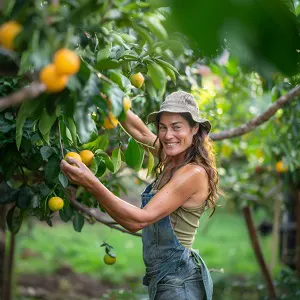
Emma Hudson
Forestry AuthorEmma's experience in farming shapes her detailed guides on gardening and farming tools, providing practical, actionable advice grounded in real-world experience. Her work targets both newcomers and experienced farmers, aiming to enhance their practices with a mix of traditional wisdom and modern techniques. By making complex agricultural concepts accessible, Emma's guides serve as valuable tools for those navigating the challenges of contemporary farming, offering strategies for sustainable success.







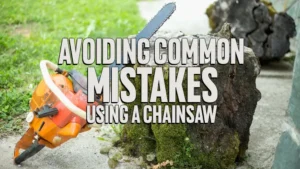



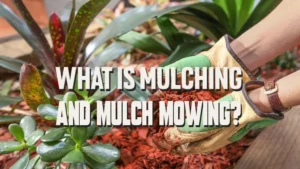

Leave your comment